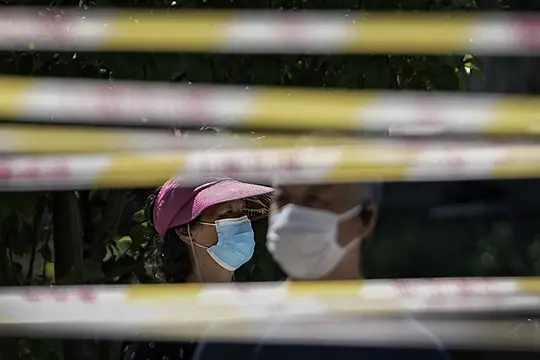Chinese officials say they have not detected any “unusual or novel diseases”, the World Health Organisation said, after an official request by the UN health agency for information about a spike in respiratory illnesses and clusters of pneumonia in children.
WHO cited unspecified media reports and a global infectious disease monitoring service as reporting clusters of undiagnosed pneumonia in children in northern China and formally requested more details earlier this week.
Outside scientists said the situation warranted close monitoring, but were not convinced that the spike in respiratory illnesses signalled the start of a new global outbreak.
The emergence of new flu strains or other viruses capable of triggering pandemics typically starts with undiagnosed clusters of respiratory illness. Sars and Covid-19 were first reported as unusual types of pneumonia.
WHO noted that authorities at China’s National Health Commission on November 13 reported an increase in respiratory diseases, which they said was due to the lifting of Covid-19 lockdown restrictions.
Since mid-October 2023, WHO has been monitoring data from Chinese surveillance systems that have been showing an increase in respiratory illness in children in northern China.
Today, WHO held a teleconference with Chinese health authorities in which they provided requested data… pic.twitter.com/lkO22QrelQ— World Health Organization (WHO) (@WHO) November 23, 2023
Other countries also saw a jump in respiratory diseases such as respiratory syncytial virus, or RSV, when pandemic restrictions ended.
WHO said media reports about a week later reported clusters of undiagnosed pneumonia in children in northern China.
The UN agency said it held a teleconference with Chinese health officials on Thursday, during which the data it requested was provided. It showed an increase in hospital admissions of children due to diseases including bacterial infection, RSV, influenza and common cold viruses since October.
“No changes in the disease presentation were reported by the Chinese health authorities,” WHO said. It added that Chinese officials said the spike in patients had not overloaded the country’s hospitals.
Dr Paul Hunter, a professor of medicine at Britain’s University of East Anglia, doubted the wave of infections was sparked by a new disease.
“If it was (a new disease), I would expect to see many more infections in adults,” he said. “The few infections reported in adults suggest existing immunity from a prior exposure.”
Francois Balloux of University College London said China was probably experiencing a significant wave of childhood infections because this was the first winter since lockdown restrictions were lifted, which is likely to have reduced children’s immunity to common bugs.
WHO said northern China has reported a jump in influenza-like illnesses since mid-October compared with the previous three years.
It is rare for the UN health agency to publicly ask for more detailed information from countries, as such requests are typically made internally. WHO said it requested further data from China through an international legal mechanism.
According to internal accounts in China, the outbreaks have swamped some hospitals in northern China, including in Beijing, and health authorities have asked the public to take children with less severe symptoms to clinics and other facilities.
The average number of patients in the internal medicine department at Beijing Children’s Hospital topped 7,000 per day, exceeding the hospital’s capacity, state-owned China National Radio said in an online article earlier this week.







